![]() "God, grant me the serenity to accept the things I cannot change, the courage to change the things I can, and the wisdom to know the difference," Reinhold Niebuhr once famously penned in prayers. Unalloyed by self-righteousness, and cognizant of man’s darkest instincts, Niebuhr’s works are widely considered as a refreshing dose of spirituality as well as a “realist” appraisal of politics in our sinful, material world.
"God, grant me the serenity to accept the things I cannot change, the courage to change the things I can, and the wisdom to know the difference," Reinhold Niebuhr once famously penned in prayers. Unalloyed by self-righteousness, and cognizant of man’s darkest instincts, Niebuhr’s works are widely considered as a refreshing dose of spirituality as well as a “realist” appraisal of politics in our sinful, material world.
His works should serve also as a perfect guide for foreign policy in the 21st century. No less than the American President Barack Obama, the “leader of the free world”, has embraced the theologian’s call for contemplative, self-critical yet audacious leadership. In my opinion, any thoughtful leader should take Niebuhr’s prayers to heart, especially in the realm of foreign policy, which is filled with uncertainties and a dazzling array of instantaneous challenges.
In light of the festering disputes in the West Philippine Sea, with the Philippines’ arbitration case against China expected to bear fruit in coming weeks, foreign policy issues will figure dominantly in coming weeks and months. With the Philippines set to welcome its new president, Rodrigo Duterte, I found it appropriate to analyze, in more specific terms, about the prospects for and contours of Philippine foreign policy, my primary area of specialization.
Over the past few years, I have written more than 500 (academic and popular) articles for the world’s leading publications and think tanks, in addition to several books on geopolitics and geo-economics in West and East Asia. I also had the chance to visit 5 continents, meeting heads of states, defense and foreign ministers, and a whole host of pundits and prominent academics, who have devoted their lifetime to understanding the physics of power in the international realm.
My main takeaway throughout these engagements was that even the smallest of nations could shape their destiny, regardless of size and wealth, provided they have the right kind of leadership, mindset and foreign policy bureaucracy acumen. Having raised expectations to stratospheric levels, the incoming Duterte administration will have to adopt an optimal cocktail of domestic and foreign policy in order to achieve its ambitious vision for the country.
So far, we have heard more about President-elect Duterte’s domestic plans, particularly his intention to launch a comprehensive fight against organized crime and address the country’s massive infrastructure bottlenecks, yet foreign policy is something that needs equally ferocious attention and investment.
As I have indicated in a series of articles for global think tanks such as Brookings, Council on Foreign Relations (CFR), and Center for Strategic and International Studies (CSIS), President-elect Duterte, so far, has exhibited a relatively sophisticated understanding of geopolitics, which should – ceteris paribus – signal a favorable trajectory for the country’s foreign policy. For this reason, I have called him a "realist". But what is the relevance of foreign policy? What are the key principles to keep in mind, especially in our globalized world? What would an optimal Philippine foreign policy look like?
Why foreign policy matters
Foreign policy is the conscious effort of a nation-state to pursue, preserve, and augment its national interest in a competitive international system, where dynamics of cooperation and conflict are mediated by balance of power calculations, international law and norms, and a plethora of regional and global regimes built around the pursuit of specialized goals.
As a scholar of comparative politics, one would realize how crucial foreign policy is for late-developing countries and/or those who are caught in the midst of superpowers. In the case of Prussia/Germany, for instance, we saw how Frederick the Great (1714-1786) and Otto von Bismarck (1815-1898) played a critical role in ensuring not only the survival of their middle-sized nation-state, but also its prosperity and rapid consolidation in periods of tremendous uncertainty in a continent dominated by Imperial France, Russia, Austria and Britain.
Not only did these leaders invest in their country’s military capabilities and national bureaucracy, but also astutely utilized diplomacy in order to fend off enemies, charm potential allies, and play one superpower against the other. As for Japan, we saw how the Meiji oligarchy, having dispensed with the feudal Tokugawa shogunate in the mid-19th century, embarked on a conscious and systematic overhaul of a largely agrarian society in order to rescue its dignity and secure its liberty from the creeping invasion of Western powers. Meiji Japan used foreign policy to build up its military-industrial capacity, secure its territorial integrity, and import best practices from like-minded powers such as Prussia (Pyle 2007).
![FOREIGN POLICY. What should be President-elect Rodrigo Duterte's focus for the country's foreign policy? Photo by Manman Dejeto/Rappler]()
Prussia/Germany, Japan and all other major late-developing countries, which were able to catch up with the Anglo-Saxon West, were not students of Adam Smith, as unschooled pundits claim, but instead Georg Friedrich List, the founder of the historical school of economics, which provided a tailored-fit blueprint for national development strategy in an era of competitive capitalism. Contrary to contemporary neo-liberal discourse, it were List, the Prussian bureaucratic principles, and the Meiji Restoration that served as the true inspiration for Park Chung-hee, Lee Kuan Yew, Chiang Kai-shek, and Deng Xiaoping and other visionary Asian leaders, who managed to steer their nation from destitute to opulence within a single generation (Bernhard 2011; Studwell 2013; Mishra 2012).
In economic terms, as the experience of newly-industrialized countries demonstrates, strategic utilization of trade and industrial policy was crucial to the establishment of an increasingly competitive export-oriented manufacturing sector in places like South Korea, Taiwan, and Japan, which not long ago were also impoverished, agrarian societies. And a fierce sense of independence and measured self-confidence undergirded their pursuit of eventual parity with status quo powers of the West.
No country is a self-sufficient island. Literally island nations, in particular, tend to be highly trade-dependent and vulnerable to external predation, as the case of the Philippines poignantly shows. Foreign policy, therefore, is the instrument by which a country can protect its interests, pursue favorable relations, and avoid unnecessary conflicts.
But let’s be clear: Foreign policy is not an instrument to primarily impress friends, charm the world, and alienate neighbors, but instead it’s about discovering friends and allies depending on the issue at hand. No permanent friends, neither permanent enemies, but only permanent pursuit of national interest, which, it self, will shift depending on the imperatives of national development and the overall dynamics of the international system.
International relations and comparative politics theories show that change in government tends to bring about more of continuity rather than change, but leading scholars such as Princeton University’s Andrew Moravcsik have shown that domestic leadership still matters. This is especially the case when one talks about strong-willed and visionary leaders. And to many, Duterte indubitably falls into that category. But what should a Duterte administration foreign policy look like?
21st century foreign policy
There are 5 key foreign principles to bear in mind. First and foremost is independence, not as a matter of semantics and aspiration, which tends to be the status quo, but as a matter of core strategic interest. Gladly, Duterte himself has signaled his willingness to pursue a more independent foreign policy. But what will it mean in actuality?
Independence doesn’t mean that you are on your own entirely. Autarky isn’t an option. It instead means that you don’t put all your strategic faith in one partner alone. After all, each (reasonable) country is ultimately out there for its own interest, although recent history shows that ‘self interest’, as Robert Gilpin argues in the case of post-war America, could also mean keeping the world safe for democracy and trade.
As far as small nations are concerned, history shows that it is best for them to maintain an equilateral balancing strategy towards major powers. This has been more or less the strategy of successful Southeast Asian nations such as Singapore and, more recently, Vietnam. In essence, it means that instead of siding with one giant against the other, it is better to maintain functional relations with all of them depending on the issue at hand.
As legendary renaissance thinker Niccolò di Bernardo dei Machiavelli cautioned Italian princes, siding with powerful neighbor (e.g., France) against another (e.g., Spain) runs the clear and present risk of ending up as part of an eventual grand bargain between the two. In less extreme cases, the smaller country will be taken for granted by its more powerful ally, since the latter knows its indispensability to the former.
Second principle is calibrated audacity. No matter how cunning and nimble a prince is, one can’t underestimate the ingenuity and statecraft of established powers. But a totally risk-averse prince runs the equal risk of missing the train of opportunities. As Machiavelli or Sun Tzu would advice, one should keep his friends close, but rivals even closer. The idea to keep in mind is that diplomacy is not only about reaching out to friends, but also understanding and outsmarting your enemies and rivals.
Above all, when one talks about serious disputes with neighboring countries, direct engagement is indispensable. You need direct diplomatic engagement in order to manage the conflict and, if conditions are right, negotiate a mutually-satisfactory solution. It is for the above reason that, for instance, I believe in the indispensability of bilateral engagement to deal with the West Philippine Sea disputes. But it is extremely important for the Duterte administration to not give up on any leverage point, especially the ongoing arbitration case at The Hague. And the incoming government should have no illusions about the intentions of Beijing in adjacent waters. As President Reagan cautioned: ‘trust but verify’.
Third principle is capacity-building and consultation. Foreign policy is a time-consuming and labor-intensive work. It demands constant research, policy re-adjustment and rapid response. Throughout the years, I had the privilege of meeting and exchanging views with (retired and serving) Filipino diplomats and folks at the Department of Foreign Affairs (DFA). I have nothing but deep respect for their hard work and dedication, not to mention world-class professionalism.
Thanks to a rigorous recruitment process, the DFA employs the best and brightest of the country. Yet, a cursory look at the available resources of the DFA and their humongous menu of responsibilities, including the protection of millions of Overseas Filipino Workers (OFWs), underscores the glaring underinvestment in the country’s foreign policy apparatus.
The Duterte administration, however, will not have to only invest more in the capacity of the DFA, but also harness the country’s collective assets, including the long list of cutting-edge strategic thinkers in the academe and media, who have developed distinct specializations in the realm of foreign policy and could serve as an precious source of advice bereft of bureaucratic interests.
Fourth principle is ideological heterodoxy, or, in layman terms, policy pragmatism. The key to success in today’s world is not following orthodox neoliberal economic policies. A cursory look at almost all successful late-developing countries shows that hardly anyone of them followed ahistorical, one-size-fits-all policy prescriptions of neo-classical economists and leading International Financial Institutions (IFIs). In One Economics, Many Recipes, Harvard University’s Dani Rodrik convincingly demonstrates how economic success in today’s globalized world demands constant fine-tuning and tailored-fit economic policies for developing countries.
The implications for our foreign policy are clear. We should develop a strategic and industrial policy that befits our special needs. Instead of mindlessly jumping into every major trade agreement out there, whether it is the Trans-Pacific Partnership Agreement (TPP) or the Comprehensive Economic Partnership for East Asia (CEPEA) or Free Trade Area for the Asia-Pacific (FTAAP),we should carefully evaluate their consequences for our national welfare, particularly our most vulnerable sectors. After 3 decades of neo-liberal reforms, the Philippines is still suffering from massive poverty, unemployment and food security. This must change. As Albert Einstein would tell us: Insanity is doing the same thing over and over again, but expecting different outcomes.
Nonetheless, in certain areas, economic liberalization may be more sensible. For instance, the Philippines clearly needs to bring in more Foreign Direct Investments (FDIs) in order to break the vicious grip of domestic conglomerates in the utility, transportation and telecommunication sectors. As much as we should be critical about the legacy of Multinational Companies (MNCs) around the world, we should also bear in mind that domestic oligarchs need to face stiffer competition if they are to grow up. Heterodoxy, rather than orthodoxy, is the way forward when it comes to our trade and economic diplomacy.
Finally, grasp of the zeitgeist. As we enter a post-American, multipolar world, it is important for the Duterte administration to enhance relations with emerging powers of the world and appreciate the tectonic shift in the global balance of power. While the United States is expected to remain as a cultural superpower for the foreseeable future, its economic hegemony is now seriously contested. Yes, America enjoys tremendous military edge, but rivals are catching up very rapidly. China, for instance, has two operational fifth-generation fighters, while Russia is working on a sixth-generation fighter.
American-dominated IFIs are also facing growing competition from newly-established financial institutions such as the Asia Infrastructure Investment Bank (AIIB) or the New Development Bank (NDB). The West will maintain supremacy in the financial realm in the coming decade or so, but no Filipino government can take this for granted, as a whole host of South-to-South arrangements (e.g., currency-swaps) reshape the global financial architecture. In short, the Duterte administration will, more than any of its predecessors, feel the reverberations of and will have to respond to this fundamental shift in the global balance of power.
There are even more urgent issues at hand. With the collapse in the price of oil, many petro-states in the Middle East are facing the prospect of recession. Saudi Arabia, for instance, is already in the midst of a historic belt-tightening. The rise of extremist groups in the region and persistent inter-state conflict among regional powers combined with an economic downturn doesn’t bode well medium-to-long-term employment opportunities as well as stability in a region that has hosted millions of OFWs in the past four decades.
So it is important for the Duterte administration to realize that our decades-long labor export policy, especially in the Middle East, is increasingly unsustainable. And this is precisely why there should be necessary contingency plans and remedial mechanisms in place. Crucially, this should go along more long-term efforts at building employment opportunities at home, which takes us back to economic diplomacy as a key component of our foreign policy.
By combining independence, cautious audacity, capacity-building and consultation, ideological heterodoxy, and grasp of the spirit of the times, the Duterte administration can usher in a golden age of Philippine foreign relations.– Rappler.com
Richard J. Heydarian teaches political science at De La Salle University and is a regular contributor to the Asia Maritime Transparency Initiative of the Center for Strategic and International Studies (CSIS) in Washington DC. His latest book is "Asia's New Battlefield: US, China, and the Struggle for Western Pacific" (Zed, London).
![]()
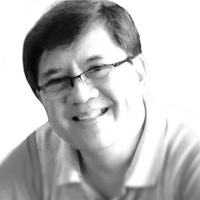

 Most of us love to hear success stories – stories about ordinary people who happily found their purpose in life.
Most of us love to hear success stories – stories about ordinary people who happily found their purpose in life.
 I watched two of President-elect Rodrigo Duterte's press conferences where he received flak for saying that certain journalists deserve to die because they're sons of bitches (SOBs).
I watched two of President-elect Rodrigo Duterte's press conferences where he received flak for saying that certain journalists deserve to die because they're sons of bitches (SOBs).
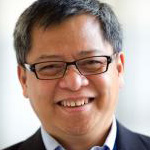 In 1987 while walking around Avenida, I stumbled upon Tadhana. No, this was not the DVD version of today’s teen flick, That Thing Called Tadhana, starring Angelica Panganiban and JM de Guzman. This was the book Tadhana: The History of the Filipino People, penned by former president Ferdinand Marcos, and put out by the Marcos Foundation.
In 1987 while walking around Avenida, I stumbled upon Tadhana. No, this was not the DVD version of today’s teen flick, That Thing Called Tadhana, starring Angelica Panganiban and JM de Guzman. This was the book Tadhana: The History of the Filipino People, penned by former president Ferdinand Marcos, and put out by the Marcos Foundation.
 I sat on the train from The Hague to Amsterdam Airport. I told myself, “This will be a long flight.”
I sat on the train from The Hague to Amsterdam Airport. I told myself, “This will be a long flight.” 
 Ever since I started to live in another city – first when I was getting my university degree in Zamboanga City, later on to live in another city for work – one thing that life taught me about survival was this: Spaces are negotiated, and the practice of my faith, constant amidst the daily demands of living in Islam, is a constant reminder of struggle.
Ever since I started to live in another city – first when I was getting my university degree in Zamboanga City, later on to live in another city for work – one thing that life taught me about survival was this: Spaces are negotiated, and the practice of my faith, constant amidst the daily demands of living in Islam, is a constant reminder of struggle.

 NOTHING HAPPENS BY CHANCE. Things always happen for a reason. In the case of our Vice President Leni Robredo, there must be plausible reasons why she assumes her mandate as the people’s chosen second-in-command outside, or “on the fringes,” of the President’s official family, the Cabinet. She now literally occupies a rather unique place in our politics that may fit in well with an apt phrase coined in her campaign which we can paraphrase, “sa laylayan ng bagong pamahalaan (at the fringes of the new government)"
NOTHING HAPPENS BY CHANCE. Things always happen for a reason. In the case of our Vice President Leni Robredo, there must be plausible reasons why she assumes her mandate as the people’s chosen second-in-command outside, or “on the fringes,” of the President’s official family, the Cabinet. She now literally occupies a rather unique place in our politics that may fit in well with an apt phrase coined in her campaign which we can paraphrase, “sa laylayan ng bagong pamahalaan (at the fringes of the new government)"
 You can talk to your kids about anything.
You can talk to your kids about anything.
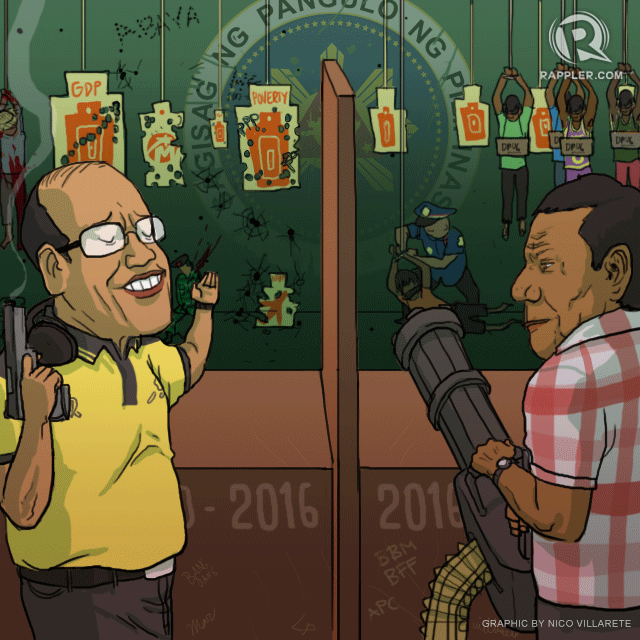
 "God, grant me the serenity to accept the things I cannot change, the courage to change the things I can, and the wisdom to know the difference," Reinhold Niebuhr once famously penned in prayers. Unalloyed by self-righteousness, and cognizant of man’s darkest instincts, Niebuhr’s works are widely considered as a refreshing dose of spirituality as well as a “realist” appraisal of politics in our sinful, material world.
"God, grant me the serenity to accept the things I cannot change, the courage to change the things I can, and the wisdom to know the difference," Reinhold Niebuhr once famously penned in prayers. Unalloyed by self-righteousness, and cognizant of man’s darkest instincts, Niebuhr’s works are widely considered as a refreshing dose of spirituality as well as a “realist” appraisal of politics in our sinful, material world.
 Philippine government officials repeat two tired catchphrases to justify the imposition of K to 12: “global competitiveness” and labor export.
Philippine government officials repeat two tired catchphrases to justify the imposition of K to 12: “global competitiveness” and labor export.
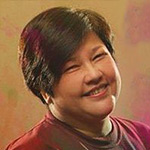 Bago pa maglaho ang interes sa
Bago pa maglaho ang interes sa 
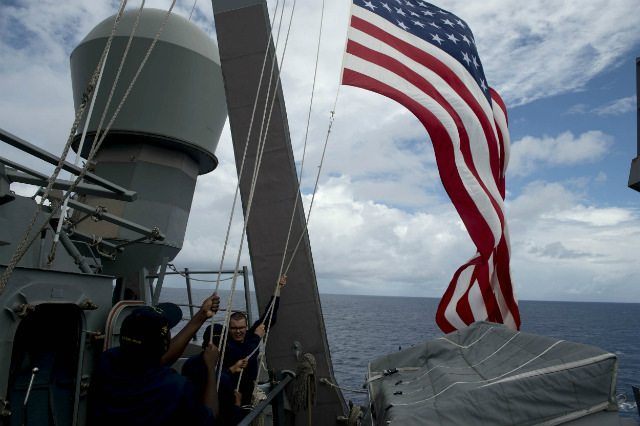
 Sure, Finding Nemo was an awesome movie, inspiring a generation of people to love clownfish, now colloquially called "Nemos." Its intended message was to keep fish in the sea, where they belong.
Sure, Finding Nemo was an awesome movie, inspiring a generation of people to love clownfish, now colloquially called "Nemos." Its intended message was to keep fish in the sea, where they belong.

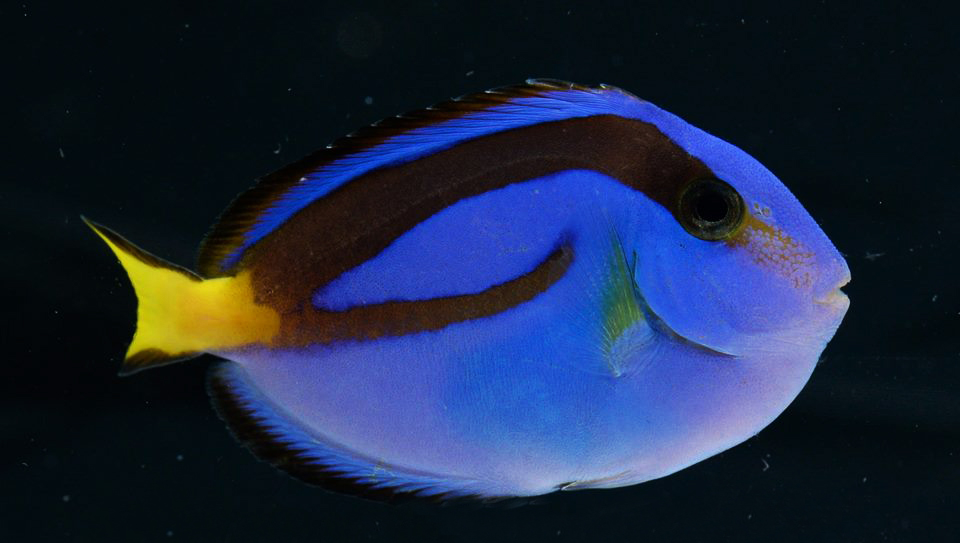
 Netizens who want to show their love for Dory can change their profile pictures for the #DefendDory campaign – which asks people to see Dory in her home instead of wanting to own her in an aquarium. Logo design by
Netizens who want to show their love for Dory can change their profile pictures for the #DefendDory campaign – which asks people to see Dory in her home instead of wanting to own her in an aquarium. Logo design by  The old adage “sticks and stones may break my bones, but words will never hurt me” proves to be obsolete as President-elect Rodrigo Duterte readies himself to take on the most sought-after position in this country.
The old adage “sticks and stones may break my bones, but words will never hurt me” proves to be obsolete as President-elect Rodrigo Duterte readies himself to take on the most sought-after position in this country.
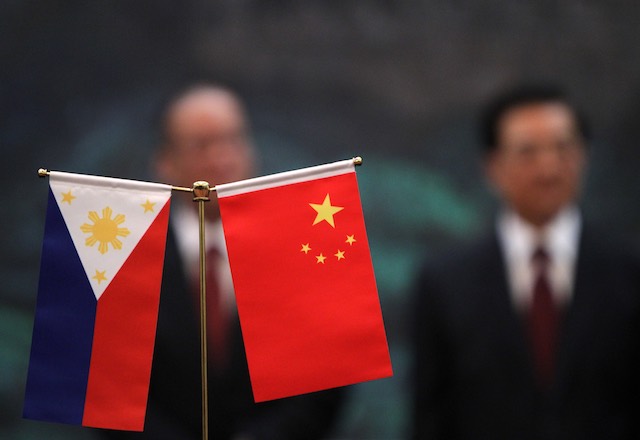
 The first time I entered a gay nightclub in my early 20s, I wore a cap and shades – which was stupid, because it was dark – to hide my face. I was no longer in the closet then, but I felt uncomfortable being seen in a place like that. The
The first time I entered a gay nightclub in my early 20s, I wore a cap and shades – which was stupid, because it was dark – to hide my face. I was no longer in the closet then, but I felt uncomfortable being seen in a place like that. The 
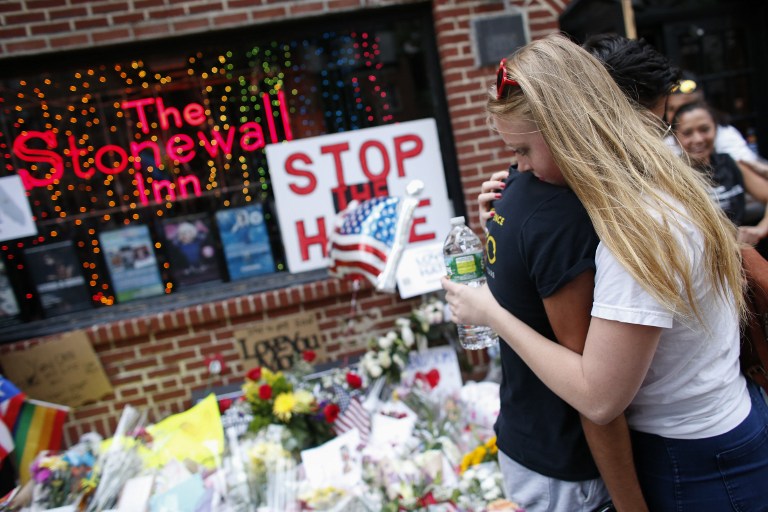

 COPENHAGEN, Denmark – You would think that a sexual reproductive health conference would be like a big sex education class where words like pleasure, orgasms – all things sexual and sensual – would be openly discussed.
COPENHAGEN, Denmark – You would think that a sexual reproductive health conference would be like a big sex education class where words like pleasure, orgasms – all things sexual and sensual – would be openly discussed. 









